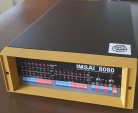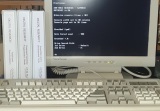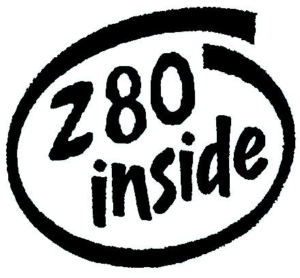 In the early 80s I built a homebrew CP/M computer system utilising the Ferguson Big Board. This system allowed me to “cut my teeth” as a software developer in Assembler and C programming languages that significantly influenced my 42-year career in Information and Communications Technology. In fact, it is fair to say that Microsoft software development platforms and languages allowed me to raise a family and pay off a mortgage.
In the early 80s I built a homebrew CP/M computer system utilising the Ferguson Big Board. This system allowed me to “cut my teeth” as a software developer in Assembler and C programming languages that significantly influenced my 42-year career in Information and Communications Technology. In fact, it is fair to say that Microsoft software development platforms and languages allowed me to raise a family and pay off a mortgage.
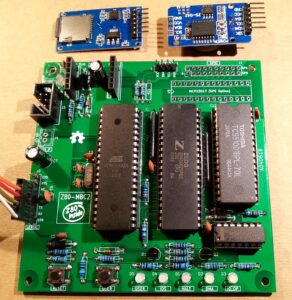 Now in retirement, I decided to satisfy my nostalgia for CP/M computers and software development and build a “retro” CP/M computer system. I chose the Z80-MBC2 design using five ICs which implements the following on a 92mm x 92mm printed circuit board:
Now in retirement, I decided to satisfy my nostalgia for CP/M computers and software development and build a “retro” CP/M computer system. I chose the Z80-MBC2 design using five ICs which implements the following on a 92mm x 92mm printed circuit board:
- Zilog Z80 CPU with 4 or 8 MHz selectable clock
- 128 kB of bank-switched static memory
- 115,200-bps (USB) serial I/O for the console
- 16-bits of general purpose parallel I/O
- Real Time Clock (RTC) module
- Micro SD Card Module
One of the ICs is an Atmel ATMega32A microcontroller which implements a universal I/O subsystem, ROM emulation (EEPROM), and reset and clock generation for the Z80 CPU. The I/O subsystem includes 16 x 8 MB virtual disk drives available for the CP/M operating system that are hosted on a Micro SD card.
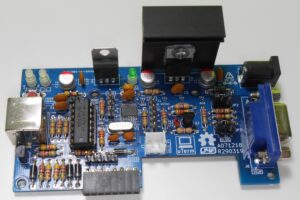 I also added the optional uTerm board which provides a DEC VT100-like terminal using a VGA monitor and a PS/2 keyboard and is powered by a 9V plug pack which supplies power for both boards.
I also added the optional uTerm board which provides a DEC VT100-like terminal using a VGA monitor and a PS/2 keyboard and is powered by a 9V plug pack which supplies power for both boards.
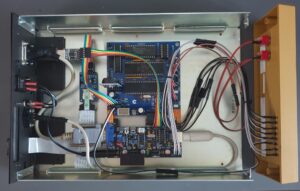 I repurposed an old enclosure that once contained a modem from the 80’s for use with my Z80-MBC2 and uTerm boards and added an image of the IMSAI 8080 computer front panel in homage to that era of 8-bit computing.
I repurposed an old enclosure that once contained a modem from the 80’s for use with my Z80-MBC2 and uTerm boards and added an image of the IMSAI 8080 computer front panel in homage to that era of 8-bit computing.
I had to join multiple pre-terminated wires to form a gooseneck in the wiring so that the front panel could be removed and lowered to allow the top cover from the enclosure to be slid on or off.
I have configured the system to run the CP/M Plus (Version 3, Banked) operating system by default, and have installed the Digital Research macro-assembler/debugging tools, Microsoft assembler, linker, librarian and cross-reference utilities, Hi-Tech C and BDS-C compilers, WordStar 4.0, dBase II 2.43 and any other useful bits of 8-bit software available from the huge, publicly available software archives where CP/M titles have now been released to the public domain.
I am quite pleased with the results and am now looking for a new project. 🙂

